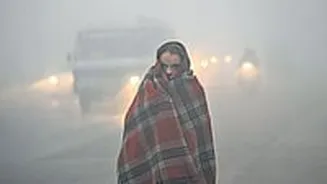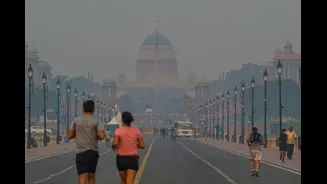Delhi: A significant drop in temperature has caused a cold wave in several regions of Uttar Pradesh, Chhattisgarh, and Jharkhand. The India Meteorological Department (IMD) has issued a yellow alert in these
areas. This unexpected chill, along with icy winds, has caused discomfort among residents as winter conditions arrive earlier than anticipated.
Uttar Pradesh weather
According to the IMD, cold northwesterly winds from the Himalayas are responsible for the significant dip in minimum temperatures. In many districts of Uttar Pradesh, including Lucknow, Kanpur, Bareilly and Gorakhpur, night temperatures have fallen below normal. Dense morning fog has also been reported in parts of western and eastern UP, causing reduced visibility and slower traffic movement.
Cold wave in Chhattisgarh
In Chhattisgarh, the impact of the cold wave is especially noticeable in northern districts such as Ambikapur, Surajpur and Korea, where temperatures have dropped rapidly overnight. Residents are advised to take precautions, particularly during early mornings and late evenings when the cold is more intense.
Jharkhand weather
According to the IMD, several areas of Jharkhand, including Ranchi, Dhanbad, Hazaribagh and Bokaro, are witnessing a persistent fall in temperature. The IMD warns that the cold conditions may continue for the next couple of days, with the possibility of frost in isolated higher-altitude regions. The weather department has issued a yellow alert in these regions.
IMD advisory
The weather department has urged citizens to stay warm, limit early-morning outdoor activities, and take necessary health precautions. Children, the elderly and people with respiratory conditions are particularly vulnerable during this period.
Cold wave in other regions
A severe cold wave continues to affect several parts of North India, bringing temperatures well below normal. The weather department said that Haryana, Punjab, Delhi, Uttarakhand, and Rajasthan are likely to experience icy winds blowing from the Himalayas, resulting in chilly mornings and sharp nighttime drops. Dense fog has also reduced visibility in many areas, disrupting road and rail traffic.
















